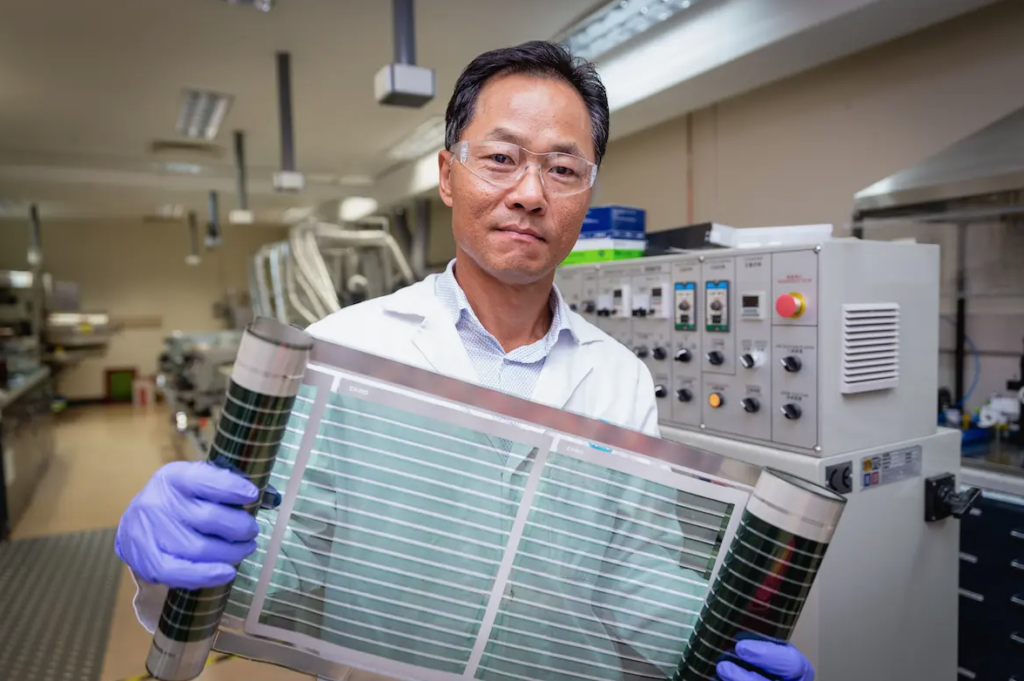Record efficiency of 15.5% achieved with print technology
– Just a few days ago CSIRO, the Australian National Scientific Agency, announced that it had sent into orbit its latest generation photovoltaic: perovskite solar cells printed directly on plastic films, light, thin and rollable. A challenging project that aims to evaluate the potential of this technology among the aggressive electromagnetic and ionizing radiation of Space. But before the panels took off – one wonders – how were they produced?
Despite the record efficiencies achieved, making perovskite solar cells of commercial size is not easy. The first problem is to be able to scale small laboratory units – often manufactured using materials or processes that are not economically viable or replicable on large volumes – in large devices obtained with fast and low-cost production methods. The rigid version on glass substrate still faces these challenges. The flexible one, on the contrary, could more easily rely on a high volume and high yield production using continuous “roll-to-roll” manufacturing techniques.
And here CSIRO intervenes. A team of scientists from the Agency has demonstrated the feasibility of hybrid solar cell modules in organic-inorganic perovskite obtained through roll-to-roll printing. And it set a new record of efficiency for this print-produced technology.
read also Japan to launch 1 wooden satellite in the world
Perovskite solar cells printed by CSIRO
The work, conducted in collaboration with researchers from the University of Cambridge, Monash University, the University of Sydney and the University of New South Wales, had to untie some technical knots. The production process of perovskite cells on a plastic substrate imposes some time and thermal limits related to the production of electrodes. The team overcame the problem by replacing expensive vacuum-deposited metal electrodes with molded carbon electrodes. Not only that.
“We developed a system to quickly produce and test more than ten thousand solar cells a day, which is impossible to do manually,” said Dr Doojin Vak, CSIRO’s principal researcher. “This has allowed us to identify the optimal settings for the various parameters in the roll-to-roll process and to quickly identify the conditions that provide the best results”.
The roll-to-roll and optimized perovskite solar cells show 15.5% conversion efficiencies for single units of small area. And 11.0% for interconnected units in series in large area modules. “Based on the devices produced in this work – reads the article published in Nature Communications – a cost of 0.7 USD/W is expected for a production rate of 1,000,000 m² per year in Australia, with the potential for further significant cost reductions”.

